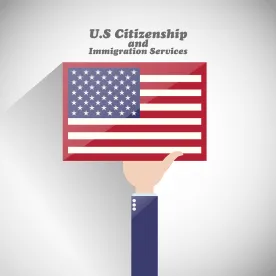On Jan. 29, 2020, USCIS announced that it would be making a significant change to the processing of I-526 Petitions, commonly referred to as EB-5 Petitions. USCIS previously had a policy to adjudicate EB-5 Petitions on a “first-in, first-out” basis. This meant that USCIS was to review and decide EB-5 Petitions based solely on the date the petition was filed with USCIS. Today, USCIS announced that it would change this policy and decide EB-5 Petitions using the “visa availability” approach.
What is the “Visa Availability” approach?
The “visa availability” approach outlined by USCIS would prioritize EB-5 Petitions for adjudication based on whether a visa number is available to the investor. This ties the timing of the decision on the EB-5 petition to whether the investor is subject to visa retrogression based on their country of birth. As a reminder, the employment-based fifth preference category “EB-5” is allotted approximately 10,000 immigrant visas annually. This quota includes principal applicants, as well as spouses and dependent children under 21 years of age. No one country can exceed more than seven percent of the total EB-5 visas available in each fiscal year.
When the annual quota is exhausted in a particular fiscal year, the State Department has to establish a wait line that determines the order in which immigrant visas are issued. This wait line is referred to as “retrogression.” The investor’s place in line is determined by his or her “priority date,” or the date the EB-5 Petition was filed and received by USCIS. This date is found on the I-526 Petition receipt notice issued by USCIS. Investors and their dependent family members cannot move forward to receive the two-year conditional green card until his or her priority date becomes “current.” Each month, the State Department monitors visa retrogression and “current” priority dates on their Visa Bulletin publication. Once a priority date becomes “current” on the Visa Bulletin, the investor and his or her dependents can obtain the two-year conditional green card.
What does this mean for investors born in mainland China, Vietnam, and India?
Currently, investors who were born in mainland China, Vietnam, and India are subject to visa retrogression due to the higher demand for EB-5 visas for investors and family members born in those countries. Investors with a spouse born in a country that is not mainland China, Vietnam, or India are not subject to retrogression, as they can be “cross-chargeable” to the spouse’s country of birth for this purpose.
As a result of this change in policy at USCIS, investors who were born in mainland China, Vietnam, and India who are subject to the visa retrogression with priority dates that are not yet “current” on the Visa Bulletin can expect to wait longer for their EB-5 petition to be approved by USCIS.
Investors who were born in mainland China, Vietnam, and India, but who have a “current” priority date on the Visa Bulletin also should continue to be adjudicated on a first-in, first-out basis. Only those investors currently subject to visa retrogression may receive delayed adjudications on the EB-5 Petition.
What does this mean for investors not subject to retrogression?
Investors who were born in all other countries and who are not subject to visa retrogression should continue to have their EB-5 petitions approved on a first-in, first-out basis using the receipt date on the I-526 receipt notice issued by USCIS. The current processing time for EB-5 petitions per the USCIS website is 32.5-49.5 months. Until the new policy is implemented, we will not fully know if the processing time for EB-5 petitions will be reduced from this current wait time.
What does this policy mean for an investor’s dependent children?
Investors who were born in mainland China, Vietnam, and India who are subject to the visa retrogression often worry about their dependent children reaching the age of 21 and “aging out” before they are able to obtain their permanent residence. This new USCIS policy could serve to protect some children from “aging out,” and allow them to continue processing with their investor parent.
The Child Status Protection Act (CSPA) was enacted in order to protect children of petitioners against lengthy petition processing times. The determination of whether the protection of CSPA applies is made when the petition priority date becomes current. At that time, the number of days the petition was pending is deducted from the child’s biological age. Assuming the resulting number is under 21 years of age (even if it’s days shy), the CSPA protections apply, and the child has one year to seek to acquire his or her immigrant visa.
For those petitions subject to retrogression and that remain pending at USCIS now, the I-526 petitions likely will be pending for more days. Those days can be deducted from the child’s age later, when the visa number becomes current. While it may not protect a child from “aging out” in every case, this likely will improve the chances for many children to continue in the immigration process with their parents. Previously, USCIS would not hold EB-5 petitions in abeyance to help protect children from “aging out.”
When will USCIS implement this change?
The new visa availability approach will apply to petitions pending as of the effective date of the change. USCIS will implement the visa availability approach on March 31, 2020. USCIS will hold a public engagement on March 13, 2020, from 11:00 a.m. to 12:00 p.m. EST, to provide information and answer questions from the public about these operational changes to the management of Form I-526 petition inventory.



 />i
/>i

